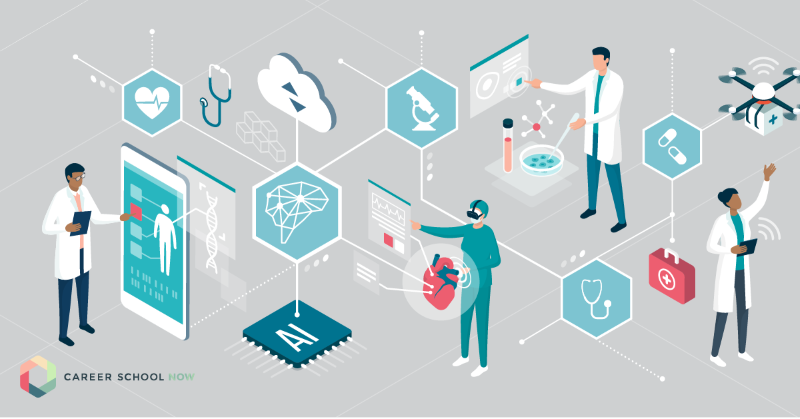Leading Abilities Required to Master Medical Administration Responsibility Today
Leading Abilities Required to Master Medical Administration Responsibility Today
Blog Article
Best Practices in Medical Administration for Improving Efficiency and Lowering Prices
In the ever-evolving landscape of medical care, the pursuit of finest techniques in clinical administration is critical for improving performance and suppressing expenses. By integrating sophisticated modern technologies such as digital health documents and telemedicine, medical care service providers can enhance procedures and boost individual treatment.
Leveraging Advanced Technology
In today's quickly progressing medical care landscape, leveraging innovative technology is no more optional but vital for effective clinical management. The combination of electronic options right into medical care systems has actually changed the method centers run, enhancing procedures and boosting person treatment. Electronic Wellness Records (EHRs) are pivotal, providing comprehensive client data that can be accessed quickly by licensed workers, hence reducing redundancy and reducing errors. By centralizing individual info, EHRs get rid of the requirement for troublesome documents and help with seamless communication among healthcare companies.
Telemedicine is an additional technological advancement that has actually transformed patient communication. It offers ease for both clients and healthcare experts by enabling remote examinations, which can decrease the demand for in-person gos to and maximize appointment organizing. Additionally, telehealth systems can extend health care accessibility to rural or underserved locations, linking spaces in treatment delivery.
Moreover, using Artificial Knowledge (AI) and machine discovering is coming to be progressively widespread in predictive analytics, enabling very early discovery of prospective wellness issues and more enlightened decision-making. These technologies, when integrated successfully, can boost diagnostic precision and personalize individual therapy strategies, ultimately resulting in improved medical care end results and operational efficiency.
Optimizing Resource Allowance
Reliable source allocation is important for making best use of the efficiency of medical administration. By tactically handling resources such as workers, devices, and funds, medical care centers can significantly enhance their operational performance, improve client results, and minimize unneeded expenses. The first step in enhancing resource allowance includes carrying out a thorough analysis of existing properties and recognizing locations where sources might be underutilized or exhausted. This analysis needs to be data-driven, making use of metrics and analytics to inform decision-making processes.
Focusing on resource allowance based on patient requirements and service needs is necessary. Carrying out flexible staffing designs can likewise maximize labor resources by adjusting workers appropriation in response to varying person volumes.
Monetary sources must be meticulously checked and allocated with tactical insight to sustain both temporary functional needs and long-term institutional goals. This includes investing in training programs that improve team expertises and adopting energy-efficient practices that decrease functional prices (medical administration). Inevitably, a maximized source allocation technique promotes a lasting medical care environment that is responsive, efficient, and monetarily sensible
Streamlining Operations Procedures
When medical care centers goal to improve operational effectiveness, simplifying process procedures ends up being an essential emphasis. Effective workflows minimize redundancy, get rid of unnecessary actions, and boost coordination amongst healthcare specialists. This method not only speeds up service delivery but also boosts the high quality of client care.

Next, modern technology integration plays a substantial role in simplifying workflows. Applying electronic wellness documents (EHRs) and electronic doctor order access (CPOE) systems minimizes paperwork, lessens human mistake, and makes sure information is obtainable to all appropriate personnel. In addition, leveraging telemedicine systems can improve person appointments and follow-ups, minimizing the strain on physical framework.

Eventually, streamlined process cause set you back decreases and enhanced patient complete satisfaction, promoting a much more sustainable health care setting.
Enhancing Information Management
Building upon structured process, enhancing data management comes to be an essential element in progressing health care management. Efficient information monitoring systems are Our site crucial for maintaining accurate patient documents, improving decision-making, and guaranteeing compliance with regulatory standards. By applying durable data management remedies, medical care facilities can improve the high quality of client treatment while at the same time minimizing operational prices.
One trick element of improving data management is the assimilation of advanced digital health and wellness record (EHR) systems. These systems promote the seamless exchange of person info throughout different divisions, lowering duplication of examinations and reducing mistakes. A well-designed EHR system supports information analytics, enabling doctor to determine fads and make informed choices concerning individual treatment.
Furthermore, guarding patient information is extremely important. Adopting detailed cybersecurity measures, including file encryption and normal audits, ensures the stability and discretion of delicate information. This not only shields patients however additionally maintains the institution's track record.
Spending in staff training is another important variable. Informing health care specialists on data management practices improves their capability to properly utilize technology, resulting in enhanced individual end results. Finally, her comment is here boosting information management through sophisticated innovation and detailed training is crucial for attaining performance and price decrease in clinical management.
Fostering Collaborative Interaction
An important element ahead of time medical administration is fostering collaborative interaction amongst health care experts. Efficient communication is paramount for making certain smooth individual care, optimizing treatment end results, and lessening errors. By encouraging open discussion and control across multidisciplinary teams, medical care companies can improve their operational performance and minimize unnecessary prices.
Central to this technique is the combination of communication modern technologies such as digital health documents (EHRs) and safe messaging platforms, which facilitate the quick exchange of important client details. why not check here These devices enable doctor to access and share information in real time, making certain that all team members are notified and aligned in their decision-making procedures. Furthermore, normal team conferences and interdisciplinary rounds can further advertise a culture of partnership and accountability.
Training programs focused on improving communication abilities are likewise crucial. Ultimately, fostering collaborative communication leads to improved health care shipment and expense savings.

Conclusion
Incorporating advanced technology, such as electronic health records and telemedicine, alongside maximized source appropriation and structured process processes, is crucial for improving effectiveness in medical administration. Reliable data management and fostering joint interaction among healthcare teams are crucial for decreasing redundancies and boosting treatment quality. By prioritizing preventative care and participating in quality renovation efforts, healthcare companies can accomplish considerable cost financial savings and enhanced patient end results, therefore making sure sustainable healthcare distribution in a progressively complex setting.
Report this page